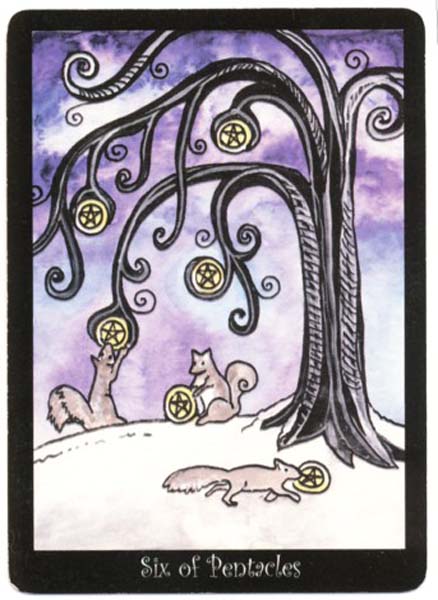
Producing seventy-eight illustrations for a tarot deck is no joke. Add to this labor and extra effort of self-publishing, self-marketing and selling. Self-publishing an original tarot deck is not for the faint of heart. Artists who get all the way through this process deserve a pat on the back for toughing it out. Artists that get through the process and deliver an exceptional deck to the marketplace deserve a warm fuzzies, a gold statue, and plenty of orders for copies in their mailbox every day.
One fine lady who made it through all of the hoops is Dana Driscoll, the creator of the Tarot of the Trees. This deck succeeds on several levels. The artist sticks like glue to her tree theme material and cleverly manipulates tree shapes to mimic traditional tarot symbolism. Usually these images remain quite organic, but on occasion, the art becomes a mannered pattern utilizing the scrolled branch terminals to hold or encompass a necessary image, as in the Ten of Wands or the Three of Pentacles.
The artist displays her gift for plastic ingenuity throughout the entire deck. The Court Cards feature a single suit symbol (wand, cup, etc.) highlighted in a tree, but the placement isn’t strictly repetitive. The Pages display the suit symbol in a landscape with a tree. The Knights either show the suit symbol on a pathway, or a leaning tree offering the item to the viewer. The Queen cards tend to embrace the symbol in some manner, while in the Kings, the symbol is integrated into the tree’s trunk or roots. The Queen of Wands card has a black cat sitting in a tree branch with sunny-faced daisies at the base – definitely a favorite.
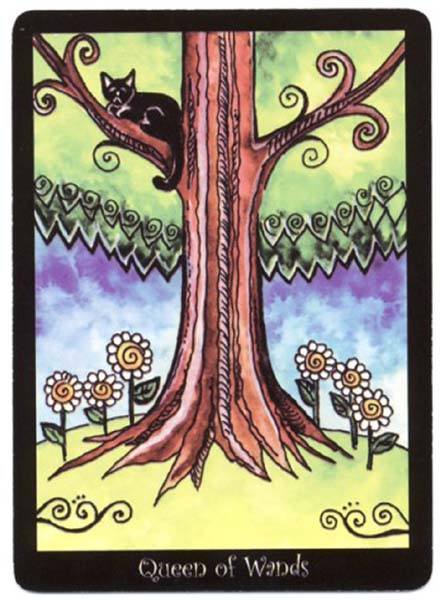
The pip cards are detailed and the symbolism never seems forced. The artist pulls off the slick trick of making it look easy and eliciting an “of course!” response from the viewer at first glance. For example, in the Seven of Wands, seven big trees block the exit from a mountain valley. In the Five of Swords, a broken tree branch is pierced by five swords. In the Ten of Pentacles, snow-covered pines cover a mountain side and ten of these have coins on them. In the Six of Pentacles, happy squirrels pluck pentacles off laden branches. Of course! Each pip card successfully conveys the sense of the divinatory meaning without cluttering the card with all of the traditional symbolism.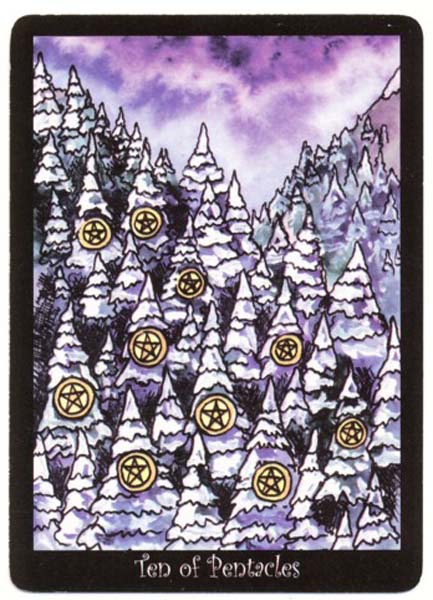
The trump cards follow through with the tree theme in the same manner. The Empress is a fruitful apple tree with baskets full of apples on the ground beneath. A lantern hangs from The Hermit’s tree in a dark, portentous landscape. A silver tree grows inside the Moon’s crescent in the High Priestess card. The Judgment card features a small sprout rising through the earth from a buried acorn.
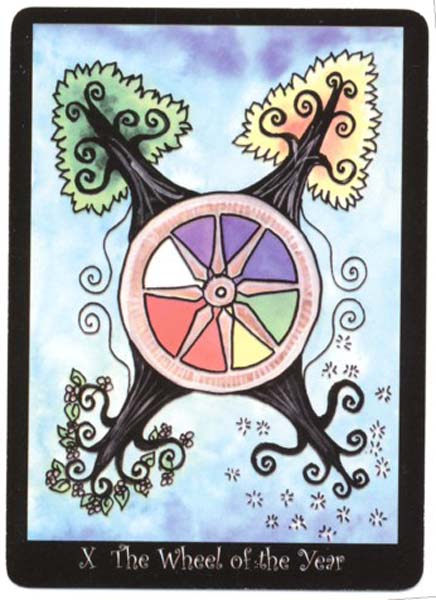
The rich colors and distinctive shapes are very clear on the easy-to-shuffle poker-size cards, and the artistic style is consistent throughout. The cards have black borders and white titles beneath; these are a bit faint and hard to read. The cards are printed on high-gloss card stock and are packaged in a custom tuck-box. No little white book is included with the deck; a book can be purchased separately from the author.
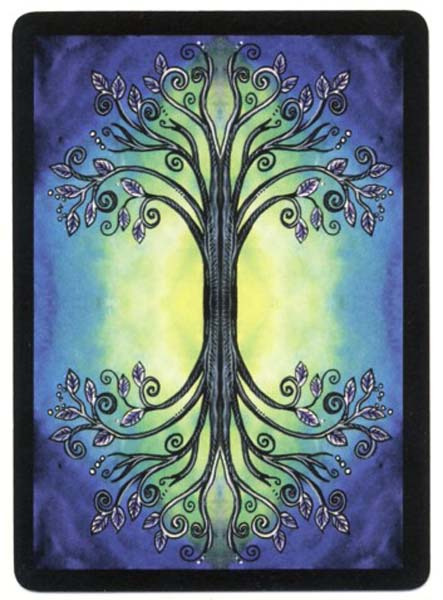
This is a wonderful, expressive, beautifully-executed tarot deck and a must-have for all tree-huggers. A sincere “Well done!” with warm fuzzies and a gold statue for this exceptional self-published tarot deck.
~review by Elizabeth Hazel
Deck by Dana Driscoll
Self-published 2009
78-card deck in custom tuck-box. $25.00 plus shipping.
Tarot of the Trees: Artwork and Meanings. Book by Dana Driscoll, 103 pgs, 2009, $20.00. (Book and deck set is $40.00) Available at http://www.tarotoftrees.com/purchase.html)
Originally printed in the ATA Quarterly Journal, Winter 2011 issue
